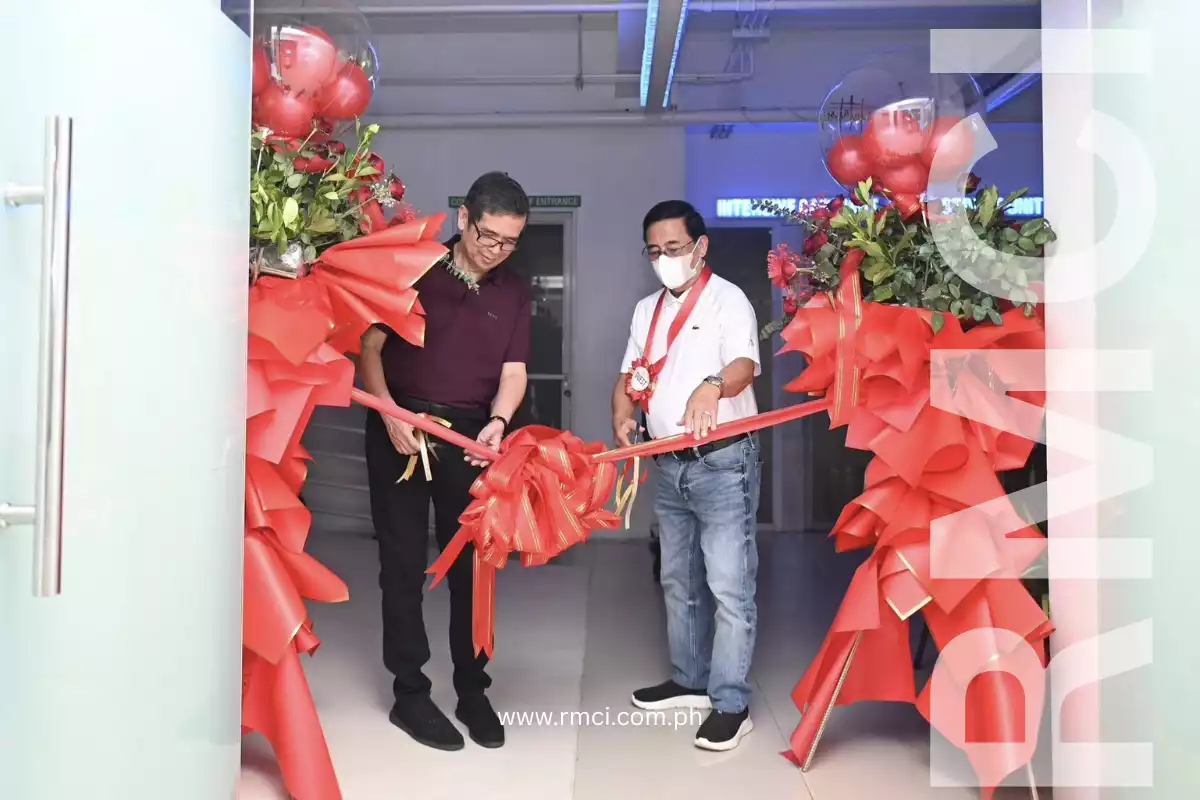The Rivera Advanced Interventions and Catheterization Lab performed the first IVC filter insertion in Davao del Norte.
Last September 8, 2025, Rivera Medical Center’s Cath Lab team just completed the first IVC filter insertion in Davao del Norte. Our team of interventional cardiologists, led by Dr. Dan Brian P. Galang and Dr. Rafael A. Tagayuna, successfully inserted an IVC filter into the patient’s inferior vena cava to help stop blood clots in the legs from going up to the lungs.
TL;DR
- Last September 8, 2025, Rivera Medical Center’s Cath Lab team just completed the first successful IVC filter insertion in Davao del Norte.
- An IVC filter is a small, metal, cage-like medical device inserted into the inferior vena cava
- IVC filters are inserted in the inferior vena cava to prevent pulmonary embolism in patients who are at high risk of developing blood clots but cannot take conventional blood-thinning medications (anticoagulants)
- IVC filter insertion is considered a minimally invasive procedure. It is not classified as a major surgery.
- Before the procedure, the doctor checks the patient’s clinical condition to avoid bleeding risks during insertion.
- During the IVC filter placement, the filter is inserted in the inferior vena cava (IVC) through the neck or groin.
- After IVC filter insertion, patients are monitored for a brief period. Once signs or recovery are positive, they are discharged.
The patient was discharged within two days because they showed consistent progress in recovery and very positive vital signs. For RMCI, having affordable and high-quality Cath Lab services in Davao del Norte gives hope for many patients in the province who are struggling with heart-related problems.
What is an IVC Filter Insertion?
An IVC filter is a small, metal, cage-like medical device inserted into the inferior vena cava — a large vein in the abdomen that carries blood from the lower half of the body to the heart. The primary purpose of an IVC filter insertion, also known as IVC filter placement, is to:
- trap blood clots that may have formed in the veins of the legs or pelvis.
- prevent blood clots from traveling to the lungs
- help reduce the risk of life-threatening pulmonary embolism (PE), a blockage in the lungs caused by clots.
Why is an IVC Filter Insertion Done?
IVC filters are inserted in the inferior vena cava to prevent pulmonary embolism in patients who are at high risk of developing blood clots but cannot take conventional blood-thinning medications (anticoagulants) due to contraindications or complications. Thus, this procedure is commonly recommended for patients with deep vein thrombosis (DVT) who have failed or cannot receive anticoagulation therapy. The IVC filter captures large clot fragments before they reach the heart and lungs, reducing the risk of fatal embolism.
Is the IVC Filter Insertion a Major Surgery?
IVC filter insertion is considered a minimally invasive procedure. It is not classified as a major surgery. The procedure is usually performed by an interventional radiologist using image guidance such as X-ray fluoroscopy. Moreover, the procedure typically involves a small incision in the skin of the neck or groin through which a catheter is inserted into a large vein and advanced to the inferior vena cava. Most cases are done on an outpatient basis with local anesthesia and mild sedation, requiring no general anesthesia or large incisions.
What is Done Before the Filter Insertion procedure?
Before the IVC filter insertion, patients receive instructions to prepare for the procedure, which include:
- Fasting (no eating or drinking) for several hours,
- Notifying their doctor of any allergies, medications, recent illnesses, or pregnancy.
- Patients are advised to avoid wearing jewelry and to wear loose, comfortable clothing.
- Blood tests and imaging studies may be done to assess the veins and overall health.
The doctor reviews the patient’s clinical condition and medication schedule, especially anticoagulants, to avoid bleeding risks during insertion.
What Happens During the Filter Placement Procedure?
During the IVC filter placement, the patient lies on their back, and vital signs are monitored. The insertion site (neck or groin) is sterilized and numbed with a local anesthetic. The doctor inserts a thin catheter through the skin into a large vein, advancing it under image guidance to the inferior vena cava in the abdomen.
Contrast dye is often injected to help visualize the vein and ensure precise placement. The filter, compressed inside the catheter, is then released to expand and attach to the vein walls, where it remains to trap clots. After placement of the filter inside the inferior vena cava, the catheter is removed, pressure is applied to stop bleeding, and the small skin incision is covered with a dressing.
The IVC filter placement procedure usually takes about an hour.
What is Required After the Filter Placement Procedure?
At RMCI’s Cath Lab, stenting is often performed during PCI to maintain artery patency after angioplasty. This is important for keeping the affected coronary artery open so that blood would continue to flow to the heart. Here are the steps used in this procedure.
- A stent is a small metal mesh tube.
- Inserted on a balloon catheter that is guided to the blockage site.
- When the balloon inflates, the stent expands and presses the plaque against artery walls.
- The stent remains in place permanently to support the artery.
- Many stents are drug-eluting, releasing medication to reduce the risk of restenosis (re-narrowing).
- Stenting effectively reduces the risk of artery closure and improves blood flow, relieving symptoms and preventing heart attacks (Mayo Clinic, 2023; MedlinePlus, 2024).
How Long Does an IVC Filter Stay in the IVC?
The duration an IVC filter remains in place varies based on the type of filter and the patient’s clinical needs. Some IVC filters are permanent, meant to stay in indefinitely; others are retrievable and designed to be removed once the risk of pulmonary embolism has decreased, usually after a few months.
Retrieval often occurs around 3 to 6 months after placement if anticoagulation therapy becomes possible or the patient’s condition improves. Extended dwell times beyond six months may increase the risk of complications and make removal more difficult. Therefore, regular evaluation is essential to decide the optimal timing for filter removal.
IVC Filter Insertion in Davao del Norte
RMCI’s Cath Lab is the first of its kind in Davao del Norte. As of September 8, 2025, it performed the first successful IVC filter insertion in Davao del Norte. This procedure is minimally invasive and plays a critical role in preventing life-threatening pulmonary embolisms in high-risk patients who cannot take blood thinners. Continuous follow-up with your cardiologist ensures safe use and timely removal once it is appropriate to minimize risks in the patient’s system.
Sources: World Health Organization (WHO), Philippine Department of Health (DOH), Philippine Statistics Authority, British Heart Foundation, Chinatown Cardiology, Cleveland Clinic, Hennepin Healthcare, Mayo Clinic, National Center for Biotechnology Information (NCBI), NHS, Philippine Heart Center



